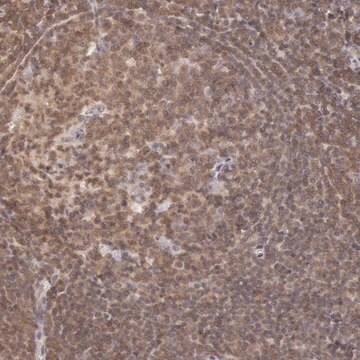MAB5382
Anti-Hypoxia Inducible Factor 1 α Antibody, clone H1α67
clone H1alpha67, Chemicon®, from mouse
Synonym(s):
HIF-1 alpha, ARNT Interacting Protein, MOP1
About This Item
Recommended Products
biological source
mouse
Quality Level
antibody form
purified immunoglobulin
antibody product type
primary antibodies
clone
H1alpha67, monoclonal
species reactivity
mouse, rat, ferret, human
packaging
antibody small pack of 25 μg
manufacturer/tradename
Chemicon®
technique(s)
electrophoretic mobility shift assay: suitable
immunohistochemistry: suitable
immunoprecipitation (IP): suitable
western blot: suitable
isotype
IgG2b
NCBI accession no.
UniProt accession no.
shipped in
ambient
storage temp.
2-8°C
target post-translational modification
unmodified
Gene Information
human ... HIF1A(3091)
General description
Specificity
Immunogen
Application
Epigenetics & Nuclear Function
Transcription Factors
Immunohistochemistry: 1:500-1:1,000. The antibody has been used successfully on formalin-fixed, paraffin embedded tissue sections after antigen retrieval.
Immunoprecipitation
Gel Shift
Optimal working dilutions must be determined by end user.
Target description
Linkage
Physical form
Storage and Stability
Analysis Note
Cobalt chloride-treated MCF-7 cells
Other Notes
Legal Information
Disclaimer
Not finding the right product?
Try our Product Selector Tool.
Certificates of Analysis (COA)
Search for Certificates of Analysis (COA) by entering the products Lot/Batch Number. Lot and Batch Numbers can be found on a product’s label following the words ‘Lot’ or ‘Batch’.
Already Own This Product?
Find documentation for the products that you have recently purchased in the Document Library.
Our team of scientists has experience in all areas of research including Life Science, Material Science, Chemical Synthesis, Chromatography, Analytical and many others.
Contact Technical Service







